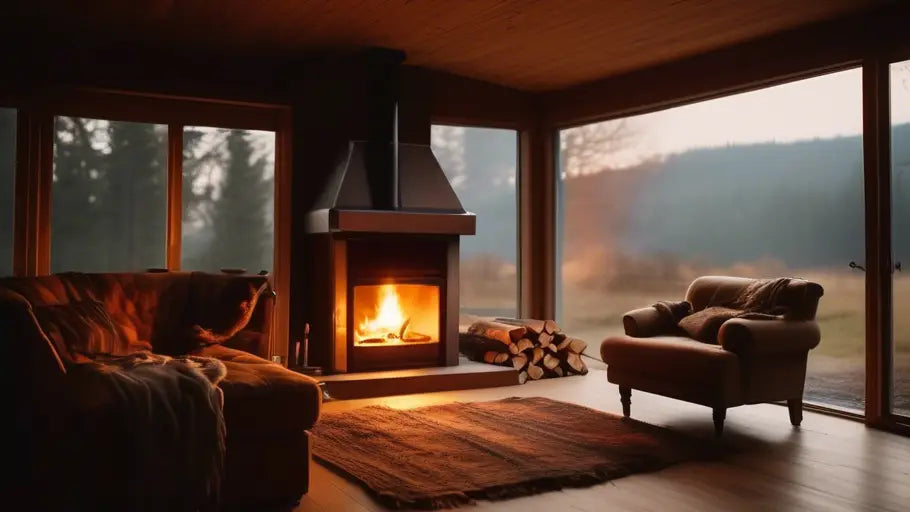As enthusiastic proponents of the traditional warmth and ambience that a wood-burning stove or open fire provides, we understand the allure of this timeless practice. However, even with the best intentions, mistakes can be made that not only reduce the efficiency of your fire but can also pose risks to safety and the environment. Let's explore some common wood-burning errors and how to sidestep them to ensure a delightful and responsible burning experience.
Mistake #1: Using Improperly Seasoned or Wet Wood
One of the most fundamental principles for an efficient burn is using wood that is properly seasoned or kiln-dried. Burning wood that hasn't been adequately dried can lead to excessive smoke, creosote buildup in your chimney, and a fire that is difficult to light and keep going.
| Signs of Wet Wood | Signs of Seasoned Wood |
|---|---|
| Dampness to the touch | Cracks at the ends |
| Darker, fresh-looking wood | Lighter, faded appearance |
| A dull "thud" when two logs are hit together | A sharp "clack" when banged together |
| Heavy with moisture | Relatively lightweight |
Solution: Always opt for wood fuels like kiln-dried logs, which have been dried to an optimal moisture content of below 20%. This ensures a cleaner, hotter, and more efficient burn with less smoke and creosote.
Mistake #2: Inadequate Airflow
Adequate airflow is crucial for a fire to burn efficiently. Restricting airflow too much can smolder the wood, producing more smoke and pollutants.
Solution: Make sure your stove's vents or the fireplace damper are open enough to allow proper airflow. Adjust them as needed to maintain a healthy, vibrant flame. If you're using a wood-burning stove, refer to the manufacturer's guidelines for optimal airflow settings.
Mistake #3: Overloading the Firebox
It might be tempting to load up the firebox to avoid frequent refueling, but overloading can lead to incomplete combustion and a buildup of creosote.
| Proper Loading | Overloading Consequences |
|---|---|
| Better combustion | Increased smoke |
| Less creosote buildup | Risk of chimney fires |
| Efficient use of fuel | Reduced heat output |
Solution: Add logs in a way that allows air to circulate around them. It's better to refuel more often with smaller amounts than to smother the fire with too much wood at once.
Mistake #4: Neglecting Maintenance and Safety
Regular stove or fireplace maintenance is vital for safety and efficiency. Neglect can lead to dangerous conditions, such as chimney fires or carbon monoxide leaks.
Solution: Schedule an annual chimney sweep and inspection to clear out any creosote or debris. Additionally, install and routinely test smoke and carbon monoxide detectors in your home.
Mistake #5: Ignoring Environmental Impact
Burning wood can have environmental implications, such as contributing to air pollution, if not done thoughtfully.
Solution: Use sustainably sourced wood, such as hardwood ash logs, to minimize your environmental footprint. Also, consider using eco-friendly fire starters to reduce the number of chemicals released into the atmosphere.
By being aware of these common mistakes and taking proactive steps to avoid them, we can all enjoy the myriad benefits of wood burning responsibly. Whether for heating, cooking, or simply the pleasure of a crackling fire, let's ensure our practices are as efficient and safe as possible.
Key Takeaways for Optimal Wood Burning
To encapsulate the essential points from the above discussion, here’s a quick-reference table highlighting the key takeaways:
| Key Takeaways | Action Items | Benefits |
|---|---|---|
| Use well-seasoned or kiln-dried wood | Purchase kiln-dried logs and check for signs of proper seasoning | Reduces smoke, improves burn efficiency, and minimizes creosote buildup |
| Ensure good airflow | Adjust airflow via stove vents or fireplace damper | Achieves complete combustion and a cleaner burn |
| Avoid overloading the firebox | Add smaller amounts of wood more frequently | Enhances combustion, reduces smoke, and increases heat output |
| Stay on top of maintenance and safety | Schedule regular chimney sweeps and maintain detectors | Prevents chimney fires and reduces risk of carbon monoxide poisoning |
| Be mindful of the environment | Opt for sustainably sourced wood and eco-friendly firelighters | Lowers environmental impact and supports sustainable practices |

